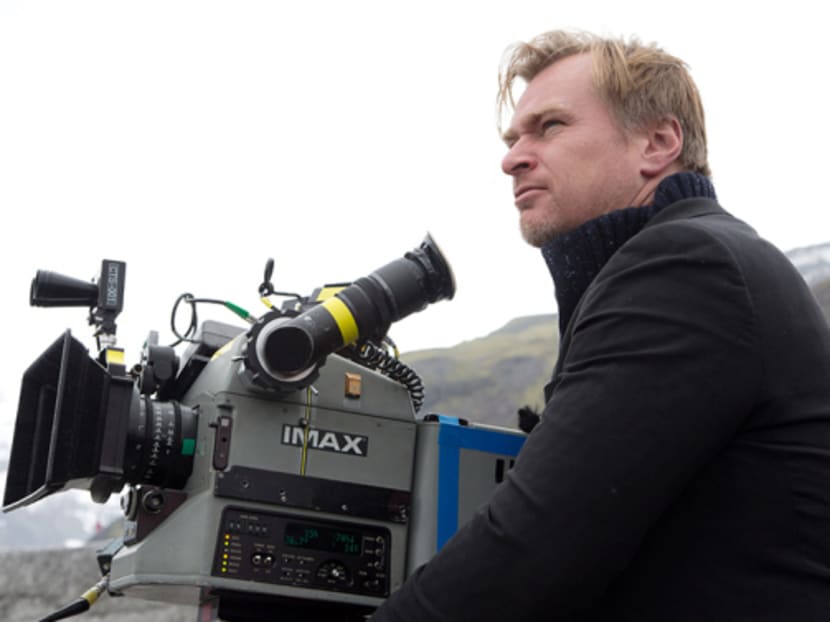There was no green screen: Christopher Nolan on Dunkirk
LOS ANGELES — Christopher Nolan’s drive for authenticity with Dunkirk led him to bring the cast and crew of his World War II epic to the very beaches in France where Allied forces snatched victory from the jaws of defeat. Even though the fighting ended decades and generations ago, there were still land mines and other live explosive devices lining the shoreline and the harbour.

Director Christopher Nolan. Variety file photo
LOS ANGELES — Christopher Nolan’s drive for authenticity with Dunkirk led him to bring the cast and crew of his World War II epic to the very beaches in France where Allied forces snatched victory from the jaws of defeat. Even though the fighting ended decades and generations ago, there were still land mines and other live explosive devices lining the shoreline and the harbour.
“Every time we’d need to do one of our explosions, we’d do a controlled explosion first to see if it would set off anything,” Nolan said during a question and answer session at the Toronto International Film Festival on Sunday (Sept 10). “When you think about how long ago it is, it was very sobering in terms of the lingering impact of these kind of events.”
Nolan and Warner Bros, the studio behind Dunkirk, brought the film to Toronto in part to kick off its Oscar campaign. The picture was a box office smash, earning nearly US$500 million (S$671.5 million) globally. It also received some of the best notices of Nolan’s career, with buzz mounting that the director behind Inception and The Dark Knight could land his first best director Academy Award nomination.
Nolan’s demand for authenticity didn’t just extend to his locations. He also outfitted real tankers, putting his actors in the kind of ships they would have been on as they tried to cross the English Channel with Nazi forces at their back.
“You could make a period perfect CG version (of a ship), but it wouldn’t feel as real,” Nolan said. “We felt that the matchup, the patina that computer graphics have is a very poor match for this kind of imagery from World War II.”
Nolan believes that his job as a director is to try to recreate as closely as possible what it must have been like to be in the thick of battle. It benefits the performances, he said. That meant that when actors like Fionn Whitehead and Harry Styles are hovering under aerial bombardment, they’re not doing it in the comfort of a studio.
“When those boys are out there on those beaches and explosions are going off, they’re going off,” said Nolan. “There’s no green screen. They’re in it.”
Dunkirk is an experiential epic. It spends little time dissecting the political and military situation that led to evacuation. Instead the film plunges viewers into the heat of battle as they accompany scores of young soldiers in a desperate struggle for survival. Nolan felt that the best way to achieve his desired impact was to avoid getting bogged down in exposition.
“I wanted to just put people there on the beach, put them in the cockpit of a spitfire,” he said, adding, “I didn’t want to cut to generals in rooms moving things around on maps... When you look at the great World War II movies from the past, that tends to be the thing that dates them.”
The film also plays with time in unique ways. One section unspools over the course of a week and follows English soldiers as they wait for transport. Another is set on a ship, over the course of a single day, as English volunteers from across the country sail out to help rescue troops. The last section follows a pilot (Tom Hardy) as he flies out to shoot down Nazi planes and give the English troops cover to evacuate. That final section is set over the course of an hour. Toronto Film Festival artistic director Cameron Bailey asked Nolan if he was worried that the intersecting time frames would be too confusing.
“Well, it’s like f-- it,” Nolan said. “It’s my job as a writer-director to try to be the audience for the film.”
The distance nature of the film’s pacing is central to its appeal, he maintained.
“We all want to see interesting and exciting things in movies,” Nolan said. “We all want to see a story that’s a little bit different from what you saw last week in a movie theatre. I’ve carved out a little freedom for myself to do that within the studio system. I feel a great responsibility to always be pushing boundaries.”
Dunkirk reunites Nolan with Hardy, who played Bane, the mask-wearing antagonist of Batman, in The Dark Knight Rises. Once again, Hardy’s face is obscured for much of the film as he engages in aerial standoffs.
“Nobody works with a mask like Tom Hardy,” said Nolan. VARIETY.COM/REUTERS





